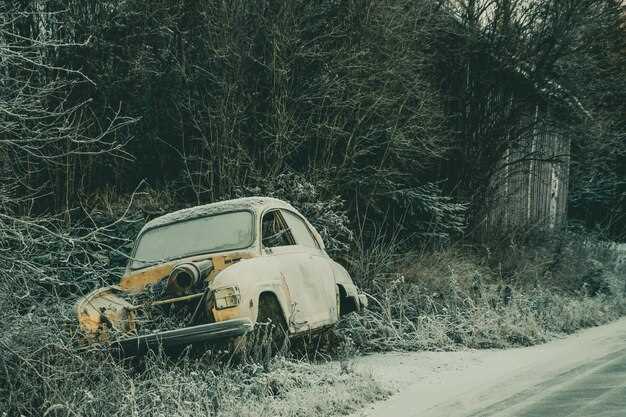
The allure of classic cars often seduces driving enthusiasts into the realm of nostalgia, but the challenge of operating these vehicles in adverse weather conditions cannot be overlooked. When the rains come pouring or snow blankets the road, the performance and safety of vintage automobiles must be carefully considered.
Many classic cars were designed with different technologies and engineering principles compared to modern vehicles. This can lead to unique driving experiences that offer charm and challenge alike. However, the engineering limitations inherent in these older models may pose serious risks when it comes to safety in wet or icy conditions. Understanding how vintage vehicles handle in such environments is essential for any owner who wishes to navigate the elements without compromising their precious investment.
In this article, we will explore the factors that influence the performance of vintage cars during rain and snow. From tire technology to weight distribution and braking systems, we will assess how these elements affect the overall driving experience. Our aim is to provide valuable insights for classic car enthusiasts who prioritize safety while still wanting to enjoy the thrill of driving their vintage vehicles in all types of weather.
Tire Choices and Their Impact on Wet and Slippery Roads

Driving vintage cars in wet and slippery conditions poses unique challenges that significantly depend on tire choices. The performance of classic vehicles can be greatly enhanced or hindered by the type of tires selected for various weather conditions. Selecting the appropriate tires is crucial, as they are the primary contact point between the car and the road surface.
In wet conditions, tires with deep grooves and adequate siping improve water dispersion, reducing the risk of hydroplaning. These features allow for better traction, helping vintage cars maintain stability and control when navigating slippery roads. Additionally, softer rubber compounds commonly found in all-season or dedicated wet tires can provide improved grip versus harder compounds, which are often found in performance tires designed for dry conditions.
When driving classic cars on snow-covered surfaces, the choice of tire becomes even more critical. Winter tires, with their unique tread patterns and softer rubber, are designed to function optimally in lower temperatures and can significantly enhance the vehicle’s handling and braking capabilities. It is essential to avoid using summer tires in such weather, as they can harden, reducing traction and increasing stopping distances.
Moreover, the handling characteristics of vintage cars may lead to different performance traits on wet and slippery roads compared to modern vehicles. Many classic cars have less advanced weight distribution and suspension systems, affecting how they respond to tire grip. As such, the appropriate tire selection not only influences immediate performance but also impacts overall vehicle safety during challenging weather conditions.
In conclusion, selecting the right tires for classic cars under adverse weather conditions is vital for ensuring safety and enhancing the driving experience. By understanding the specific capabilities of various tire types, vintage car enthusiasts can navigate wet and slippery roads with greater confidence and control.
Braking Systems: How Classic Designs Respond in Adverse Weather

When considering vintage cars, it’s essential to understand how their braking systems perform in adverse weather conditions. Classic braking technologies, such as drum brakes, were prevalent before the widespread adoption of disc brakes. These older systems demonstrate unique characteristics when faced with rain and snow, impacting driving safety and control.
In rainy conditions, drum brakes can struggle due to their design, which can trap moisture and reduce braking efficiency. Water can accumulate within the drum, creating a slippery environment that hampers friction between brake shoes and the drum itself. This phenomenon may lead to longer stopping distances, making it crucial for drivers of vintage cars to exercise caution and anticipate their braking needs. Classic car enthusiasts should also consider upgrading to modern braking compounds that offer enhanced performance in wet weather.
On the other hand, disc brakes, which became popular in the later years of classic car production, provide better performance when dealing with wet conditions. They expel water more effectively due to their open design, helping maintain optimal friction levels. However, older disc brake systems may lack the advanced materials and engineering found in contemporary models, leading to potential challenges in extreme weather.
In snowy conditions, the challenge intensifies as both types of braking systems face reduced traction. Vintage cars often have narrower tires compared to modern vehicles, which can result in less grip on slick surfaces. Consequently, stopping distances can significantly increase, underscoring the importance of careful driving practices. Classic car owners should be mindful of their vehicle’s handling abilities and consider the integration of modern tires that offer better performance in winter weather.
Ultimately, while classic cars carry a nostalgic appeal, their braking systems require a careful assessment for safe driving in adverse weather. Understanding how these vintage designs react in rain and snow not only ensures a more secure driving experience but also highlights the engineering advances made in the automotive industry over the decades.
Driver Techniques for Handling Vintage Cars in Rain and Snow
Driving vintage cars in challenging weather conditions such as rain and snow requires specific techniques to ensure both safety and performance. Classic vehicles often lack modern traction control and safety features, making it crucial for drivers to adapt their skills accordingly.
Firstly, it’s essential to reduce speed. Vintage cars can be more prone to skidding and loss of control on wet or icy surfaces. Keeping a lower speed enhances traction and gives you more time to react to unexpected situations. Smooth acceleration and braking are vital; sudden inputs can lead to loss of grip.
Maintaining distance from other vehicles is critical in adverse conditions. This allows for greater reaction time and reduces the risk of collisions. Employing the “three-second rule” can be particularly effective; this means maintaining a distance that allows you to count three seconds from when the vehicle ahead passes a fixed point until you reach it.
Utilizing the correct gears is another important technique. When driving downhill in slippery conditions, using a lower gear helps to control speed and prevents the brakes from locking up. Similarly, when accelerating on a slippery surface, starting in a higher gear can minimize wheel spin.
Proper tire maintenance is a necessity. Ensure that your vintage car’s tires are suitable for wet or icy conditions and that they have adequate tread depth. Consider using winter tires if you frequently encounter snow, as they provide improved grip compared to standard tires.
Lastly, always keep in mind the unique handling characteristics of your classic car. Familiarize yourself with its quirks, and practice in a safe environment when possible. Understanding how your vehicle responds in different conditions will improve your driving technique and enhance your overall safety.











